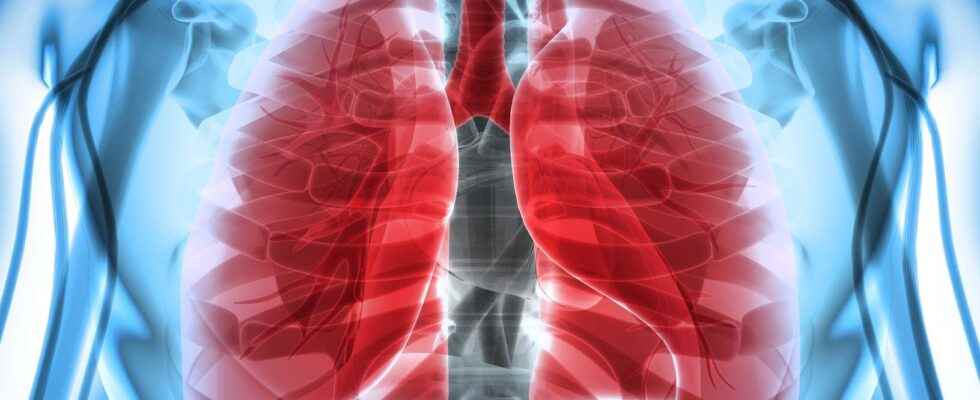Intentionally induced for therapeutic purposes (for the treatment of tuberculosis) until the middle of the 20th centurye century, pneumothorax corresponds to the presence ofair in the pleural cavity resulting in sagging from lung. It can be more or less serious depending on its size and generally concerns only one lung (unilateral).
The lungs are surrounded by the pleura, a thin connective tissue membrane made up of two layers: the parietal pleura against the wall thoracic and the visceral pleura contiguous to the lungs. Anatomical structure in the shape of a bag, this double membrane defines a space, the pleural cavity containing a liquid lubricant (liquid plural).
It is the sliding of these sheets one on the other that allows the lungs to follow the movements of the rib cage during breathing. Any effusion that separates these two layers disrupts the functioning of the lungs. During a pneumothorax, air enters the pleural cavity, the pressure intrapleural increase, the lung separates from the chest wall and decreases by volume.
What are the causes of a pneumothorax?
Usually of spontaneous onset, primary pneumothorax occurs in young people (mostly in tall men) following the spontaneous rupture of a small bubble located at the top of the lung. The symptoms vary according to the severity of the pneumothorax: they can range from chest discomfort to severe pain brutal unilateral sometimes accompanied by dyspnea (shortness of breath).
Secondary pneumothorax is seen in patients with underlying lung disease such as severe chronic obstructive pulmonary disease (COPD), the cystic fibrosis or during pneumocystosis in immunocompromised people (HIV).
In the case of a traumatic pneumothorax, more rare, the entry of air is carried out on the thoracic side following a rib fracture, a shock, a accident, a gunshot wound or during a surgical procedure.
Treatments for pneumothorax and recurrence
Diagnosed by chest x-ray, the gravity pneumothorax depends on its size. If it is insignificant, the resolution can be spontaneous after a few days. Otherwise, the air must be evacuated and the installation of a drain into the pleural space or aspiration through catheter will be recommended.
Certain complications can occur (air leak, absence of re-expansion of the lung, pulmonary edema) including a compressive pneumothorax which leads to respiratory distress and cardiovascular requiring urgent care.
However, when a pneumothorax occurs spontaneously for the first time, the rate of recurrence in the following three years is 50%. Surgical treatment will then be offered at the time of the second episode consisting of resecting the responsible bulla under thoracoscopy.
You will also be interested
[EN VIDÉO] Interview: detecting lung cancer with a blood test Each year, lung cancer affects between 30,000 and 40,000 people in France. It is also the cancer that kills the most, in part because of too late screening. Recently, a team of French researchers set up an early diagnosis system for lung cancer. Futura-Sciences went to meet Paul Hofman, director of the Nice pathology laboratory and author of this study, so that he could give us more details on his discovery.
Interested in what you just read?
.
fs7
